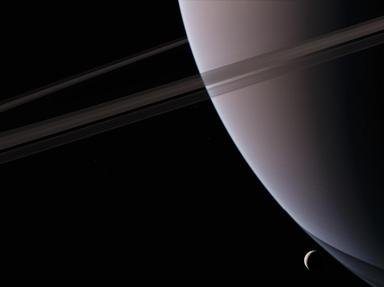
The Moons of Saturn Trivia Quiz
There are 146 known natural satellites of Saturn (at time of writing). The earliest discovered moons were named for the Titans and Giants of Greek mythology. Just pick the ten from this list that orbit the solar system's second biggest planet.
A collection quiz
by Snowman.
Estimated time: 3 mins.
- Home
- »
- Quizzes
- »
- Science Trivia
- »
- Our Solar System
- »
- Saturn